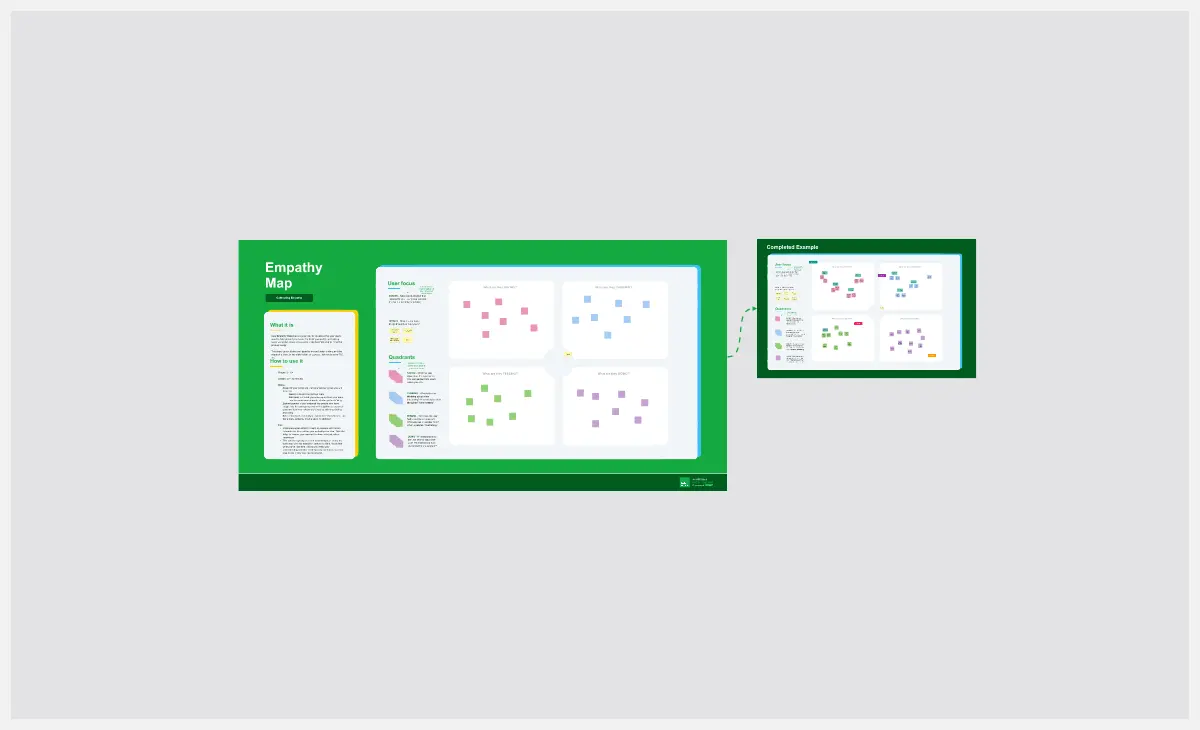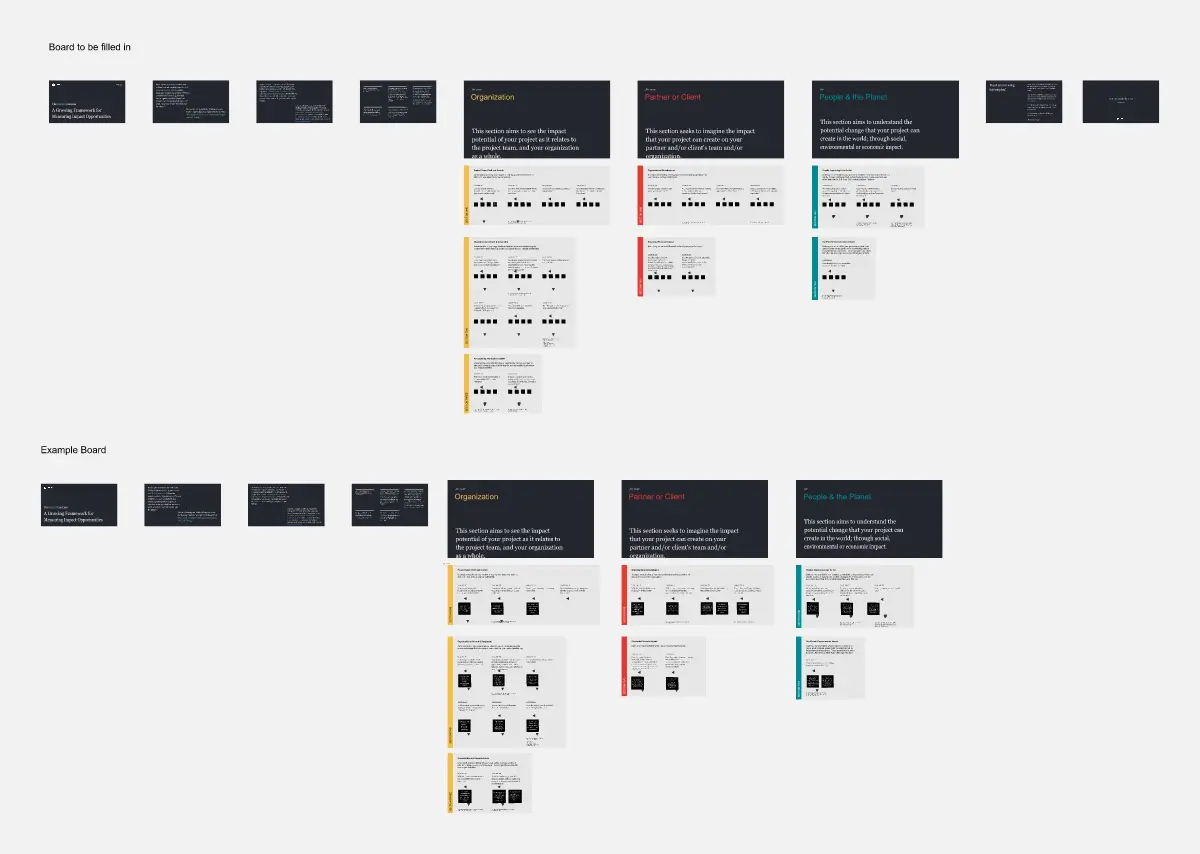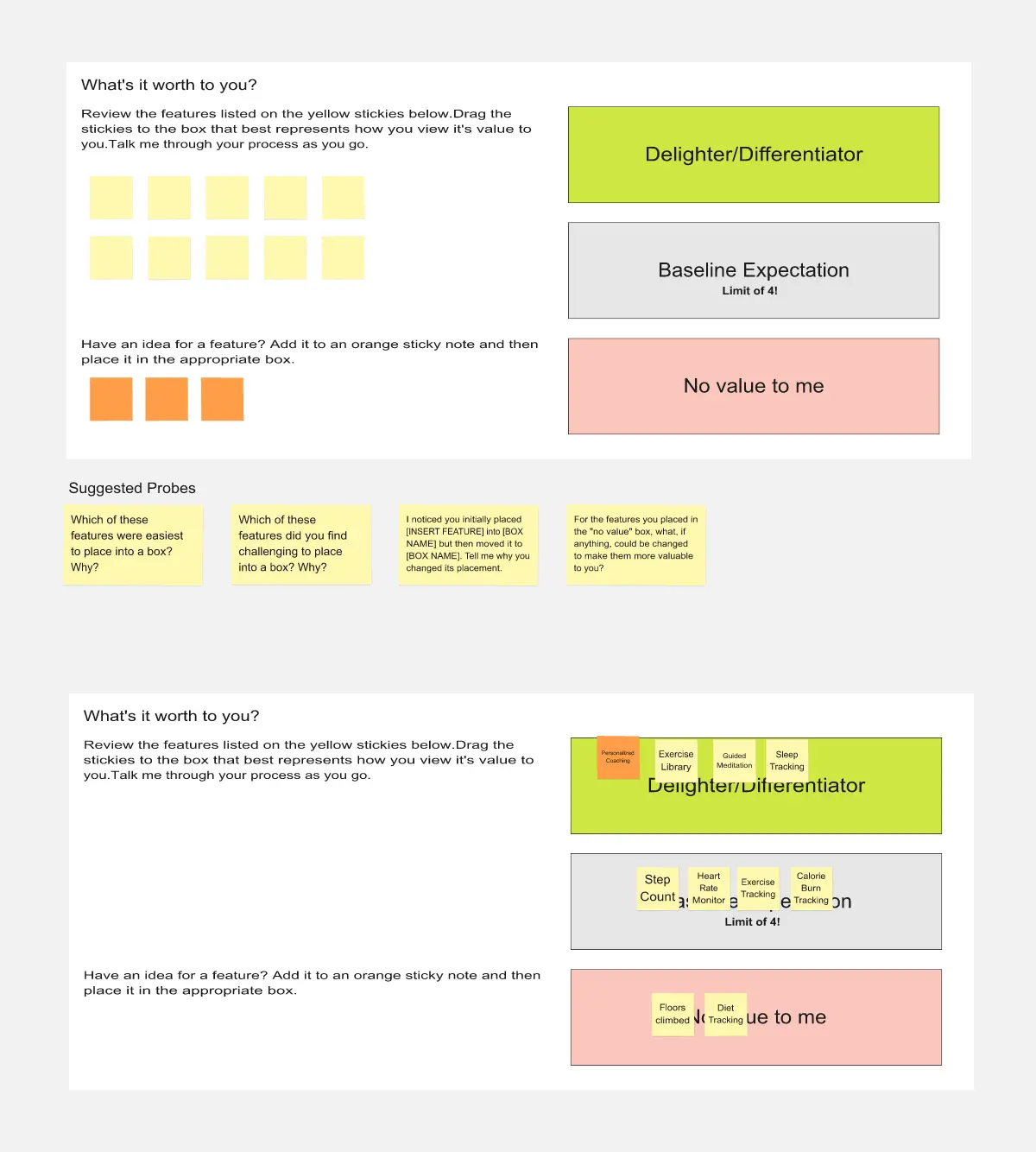Buy a Feature
"Buy a Feature" is a research game that has been leveraged in the human-centered design world for some time. This activity is used to understand which features or components for a product/experience would be most important for users to have, given a fixed amount of resources. The game helps you understand trade offs users may make, places where they struggle with diminishing resources, or, possibly, if they prefer a "less is more" approach to the product experience. This template is designed to be used as an activity within a 1:1 moderated research session.
Research participants are given a fixed budget with which they can go shopping for different features for the product/service. Features should be organized in aisles that group similar types of features together. Whenever a feature is purchased, they must settle up the cost at the cash register. As the game goes on and they have less budget remaining, researchers can start to understand where trade offs are being made and where true preiorities may lie. Researchers can use these decisions, and how easily or quickly participants make these decisions, as a launching point into deeper conversations about what drove these decisions.
Setting up the game
Working with your product team, determine the existing, planned, or even hypothetical features/attributes of the product. Assign a price to each feature. A common way to do so would be to use relative t-shirt size of the effort (Small, Medium, Large) to determine whether the price should be $50, $75, or $100 (yellow, pink, and purple stickies, respectively). If you'd like, you can engage your design team to create a small wireframe concept of the feature so participants have something more tangible to react to.
Next, order your features into aisles, roughly organized by a common theme. You'll also want to have a small number of "wild card" features available for participants to choose. These features give participants to add a feature that they don't see for sale to the marketplace. The catch is that the feature is listed at the highest price point. A good starting number of wild cards is 3.
Finally, determine the budget participants will have for the activity. A good baseline is to give participants 60% of the total value of features for sale in the marketplace. This prevents participants from purchasing everything, forcing tradeoff decisions. Once your budget is determined, adjust the amount of money available in the "Wallet" section of the board.
The template also has space for a cash register where money is moved to from the wallet once a participant places a purchased feature in the cart.
Running the Game (Run Time: 15-25 minutes, including discussion)
You may want to retain control of the board for them, as this allows you to manage the process of settling up the money at the cash register.
Start out by orienting the participant to the game board, the rules, and their budget. Next walk them through the each of the aisles to give them a sense for what is for sale. This may be a moment to ask them if they didn't see any features they would have liked to and then have them generate some wild card features. If they don't have any ideas at this time, you can always come back again at the end.
Aisle by aisle, have participants call out the features they want to purchase and then move them to the cart, settling up the money as you go. Have the participant talk through their thought process outloud so you can understand the logic and preferences that could br driving their decisions.
Once they have completed all of their purchases, including any wild card features, take a moment to ask which features were easiest for them to make a purchase decision for vs. which were harder to make a decision about. If they end the activity with no money (or too little to make another purchase), ask them what, if anything, would they purchase if they had enough for just one more. If they leave a meaningful amount of money on the table, ask why they didn't feel the need to purchase more than they did.
Acknowledgements
Special thanks to Emily Messing, a Research Director at Craft, for consultation and feedback on this template when I first used it and to Karen Buhler, a Researcher at Craft, who test drove the activity and then used it in her own study!
Categories
Similar templates





